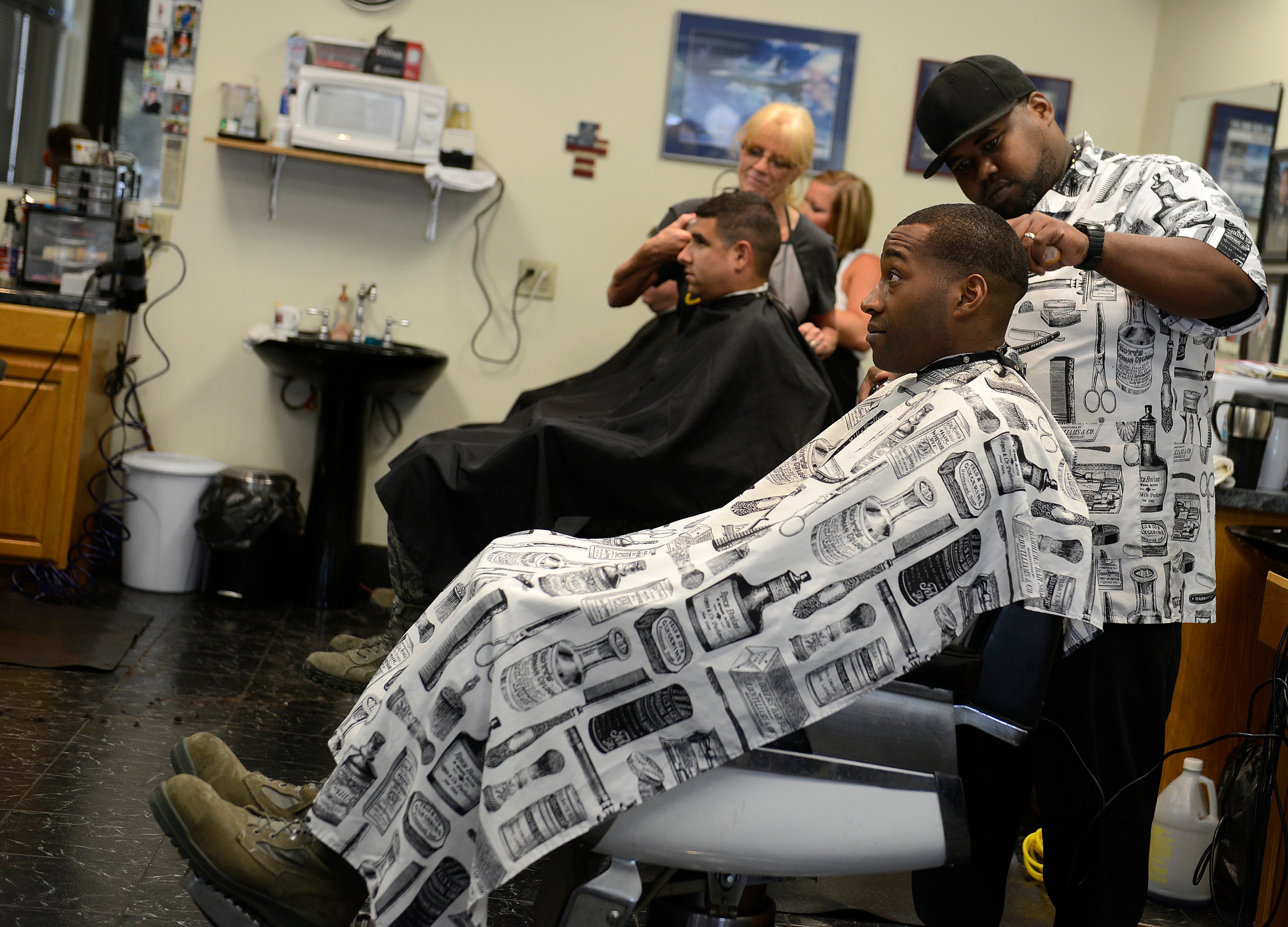Female airmen will soon be allowed to wear their hair in one or two braids, or a single ponytail, Air Force officials announced Thursday.
Women will also be allowed to wear longer bangs that touch their eyebrows, the Air Force said in a news release, but the bangs will not be able to cover their eyes.
The revised dress and appearance standards will take effect with the next update to Air Force Instruction 36-2903, which is slated to be published in February, the Air Force said.
“This decision is a commitment to supporting the airmen we need, and sustaining the culture and environment of excellence that will continue to make the Air Force an attractive career choice for airmen and families,” Chief of Staff Gen. Charles “CQ” Brown said in the release. “I’m thankful for the feedback and research conducted from a number of women leaders, the Women’s Initiative Team, the Air Force uniform board and our joint teammates.”
The Air Force decided against further relaxing standards that bar most men from wearing beards.
The idea for these changes came from airmen across the service, part of a crowd-sourced campaign to gather suggestions on how to improve dress and appearance rules.
RELATED

Thousands of women wrote to the Air Force’s Women’s Initiative Team last year about problems with the old hair grooming standards, the release said. The current approved styles for women, such as wearing their hair in tight buns, caused damage to women’s hair, migraines, and in some cases, hair loss, some women complained.
A uniform board — including a diverse group of 19 airmen from various ranks, across major commands and headquarters directorates — met virtually last November to discuss dress and appearance rule changes, including the recommendation for changing hair regulations that came from the women’s team. Brown approved the changes after considering the force’s feedback, the board’s recommendation, and the professional image and standards of the Air Force.
The Air Force hopes hair standard changes will also help it improve diversity and inclusion in the ranks by giving women from a variety of races more options that might better suit their hair.
“In addition to the health concerns we have for our airmen, not all women have the same hair type, and our hair standards should reflect our diverse force,” said Chief Master Sergeant of the Air Force JoAnne Bass, the first woman to hold that position, in the release. “I am pleased we could make this important change for our women service members.”
The bulk of the braids or ponytail must not exceed the width of the airman’s head, the revised rules will say. Their length will not be allowed to extend any further than the top of each sleeve inseam at the underarm through the shoulder blades.
Women must still adhere to current rules for occupational safety, fire and health guidance, as well as mishap prevention procedures designed to lessen the potential for hair to get caught in machinery, equipment, power transmission devices or moving parts.
“We remain committed to removing barriers to service,” Air Force personnel chief Lt. Gen. Brian Kelly said in the release. “In an all-volunteer force, we want fully qualified volunteers who are representative of the nation to see us as a great opportunity to maximize their talent and serve.”
The board also considered whether to allow more men to wear beards, but ultimately decided not to relax those rules. The Air Force said that, unlike the women’s hair standards, current male grooming standards carry no known health or hair loss risks, aside from those already covered under existing shaving waivers.
Beards are now only allowed for men who have a medical reason, such as a shaving waiver for men who suffer from painful razor bumps, or for religious reasons. Muslim, Sikh and Norse Heathen airmen are among those who have received waivers to wear a beard in accordance with their faith.
Female uniformed members of the Space Force, who are called guardians, will follow the Air Force’s grooming standards until that service develops its own policy.
Stephen Losey is the air warfare reporter for Defense News. He previously covered leadership and personnel issues at Air Force Times, and the Pentagon, special operations and air warfare at Military.com. He has traveled to the Middle East to cover U.S. Air Force operations.





